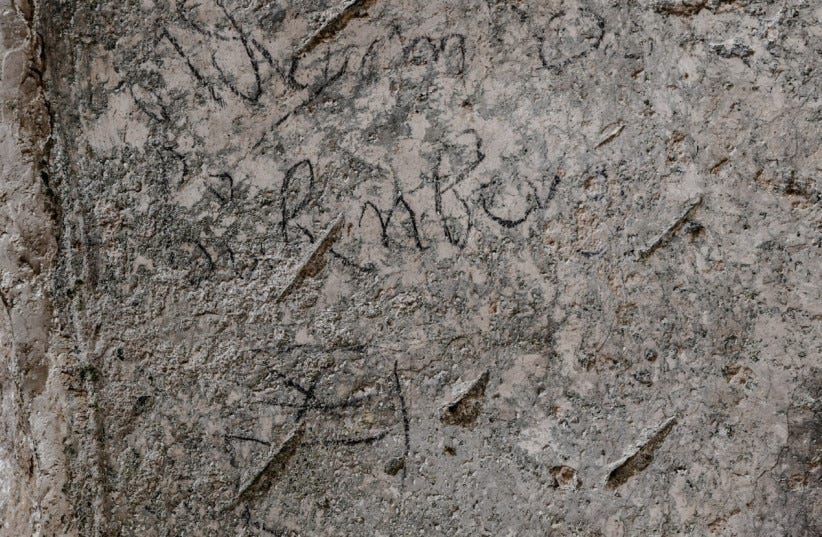Monthly Digest - January 2023
Issue 27
In The Field…
Archaeologists Express Frustration over Netflix Series: Ancient Apocalypse
Reported by Hyperallergic:
In November 2022, Netflix launched a new “docuseries” titled Ancient Apocalypse, presented by journalist Graham Hancock. Over the course of eight episodes, Hancock revivifies long-discounted, Victorian-era views of the ancient past in connection with a great flood and even Atlantis. He also questions the views and motives of professional archaeologists. Hancock’s unfounded hypotheses and attempts to undermine the field of archaeology have now pushed the Society for American Archaeology (SAA) to issue an open letter decrying the show’s disparaging remarks against archaeologists and calling out the show’s alignment with racist theories about the ancient past.
Bronze Age Canaanites Used Silver as Currency
…Buying a beast is not a huge transaction. But if it was, say, a ship you sought, you might have paid by forking over its value in silver, according to a new paper by archaeologists at the University of Haifa and the Hebrew University, published last week in the Journal of Archaeological Science.
The use of silver fragments, sheep wool, grain and other stuffs as pre-monetary currency seems to have begun in the third millennium B.C.E. in Anatolia, Mesopotamia and Syria, the authors explain, based on cuneiform records and archaeological discoveries.
You can read more at Haaretz.
Excavations Reveal Second Temple of Urartian King Menua
As reported on Arkeonews:
The second temple of King Menua as well as a chamber tomb were unearthed during the excavations carried out this year in the Urartian castle in the Muradiye district of Van, in eastern Turkey.
The discovery was made among the ruins of Körzüt Castle from the 8th century BC. Körzüt is the modern Turkish name of a Urartean fortress situated on a rock spur at the southern end of the Muradiye/Berkri plain, about 3 km north of the modern village of Uluşar (Korsot/Gortsut), in the Muradiye district of Van province in Turkey.
Ancient Inscription Written in Greek Letters Discovery in Central Asia
Ancient Greek letters carved on rocks were recently discovered on a mountain in Tajikistan, a country in Central Asia.
The engravings in Greek writing in the Bactrian region of that area reads, “ΕΙΔΙΗΛΟ Υ…ϸΑΟΝΑΝϸΑΕ ΟΟΗ-ΜΟ ΤΑΚ-ΤΟΕ,” which translates to “This is the…of the king of kings, Vima Tactu,” according to Nicholas Sims-Williams, a leading specialist in the study of the Bactrian language.
More at the Greek Reporter.
Middle Ages Knight Graffiti Discovered at King David’s Tomb
Reported by the Jerusalem Post:
A piece of graffiti bearing the name of Knight Adrian von Bubenberg along with his family emblem was discovered on the wall of King David's Tomb on Mount Zion, in Israel's capital of Jerusalem, the Israel Antiquities Authority announced on Thursday.
Found as part of the IAA's research project documenting pilgrims' inscriptions, the researchers discovered the graffiti bearing the name of the Swiss noble, who was dubbed a Knight of the Holy Sepulchre following his pilgrimage to Jerusalem in 1466.
Site News
Currently available are podcast episodes:
You can also listen to them on:
Quote Of The Month
By all means, marry. If you get a good wife, you’ll become happy; if you get a bad one, you’ll become a philosopher. - Socrates
Recommended Books
Asiatics in Middle Kingdom Egypt: Perceptions and Reality
by Phyllis Saretta
The ancient Egyptians had very definite views about their neighbours, some positive, some negative. As one would expect, Egyptian perceptions of 'the other' were subject to change over time, especially in response to changing political, social and economic conditions. Thus, as Asiatics became a more familiar part of everyday life in Egypt, and their skills and goods became increasingly important, depictions of them took on more favourable aspects.
The investigation by necessity involves a multi-disciplined approach which seeks to combine and synthesize data from a wider variety of sources than drawn upon in earlier studies. By the same token, the book addresses the interests of, and has appeal to, a broad spectrum of scholars and general readers.
Resources
Artifact Of The Month
A cast of the Moabite Stela (aka the Mesha Stela) dating to around the 9th century BCE and discovered in Jordan. Currently on display at the Oriental Institute of the University of Chicago. It contains an ancient inscription by the King of Moab, Mesha, elements of which match events in the Hebrew Bible. It also contains a supposed reference to the “House of David.”










